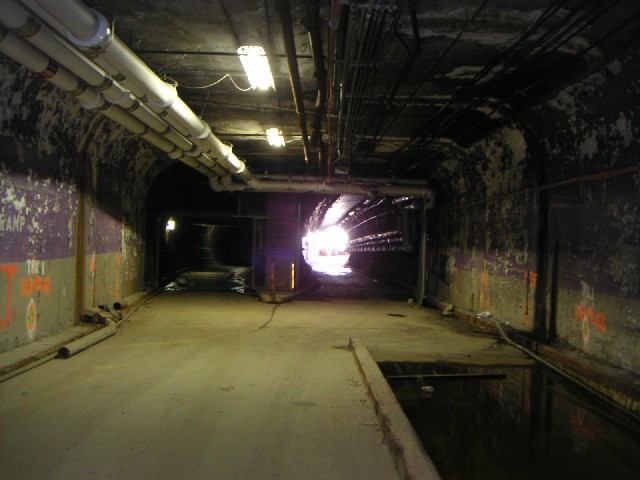I have a question: heading west out of the loading docks (Hudson Terminal) into either Ramp J or L, where did the tubes end up? I mean pre-9/11/2005, if you were to drive through there, where was the connection between the old Hudson Tubes and the outside world? Did the two "ramps" (tubes) extend all the way through the WTC site to West Street and that's where the connection was? And then that would mean that the WTC was built AROUND the tubes, just like you see in the photos of the construction of the WTC how the original tubes are suspended up in the air?
Ramp J connected the ramps from Barclay St to the east loading dock (former H&M hudson terminal). Ramp L connected the east loading dock to the west loading dock (the much larger, new loading dock for the towers).
Ramp J was so named because it connected the east part of the complex to "Zone J" on the west (bathtub) end. Ramp L was named because it connected to "Zone L". The west part of the site was split into zones J, K, and L from north to south.
The only sections that had the iron rings were what is in the photos. The rest of the ramp was a new structure with the exception of the portion immediately near the east loading dock (see my second picture above) which was not ringed but was still original H&M.
When the complex was built, they removed that suspended tunnel section that you see in the pictures. That was there until they completed the new alignment and switched trains over to that. Once that happened, the tube coming through the bathtub was removed.






